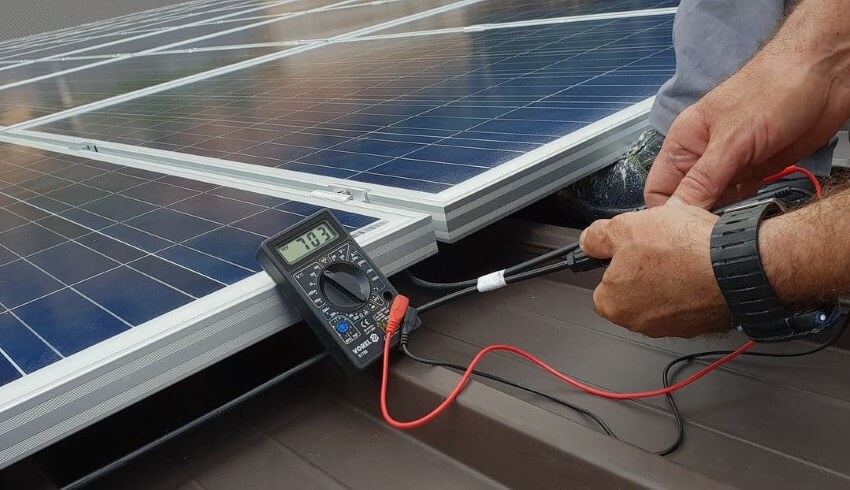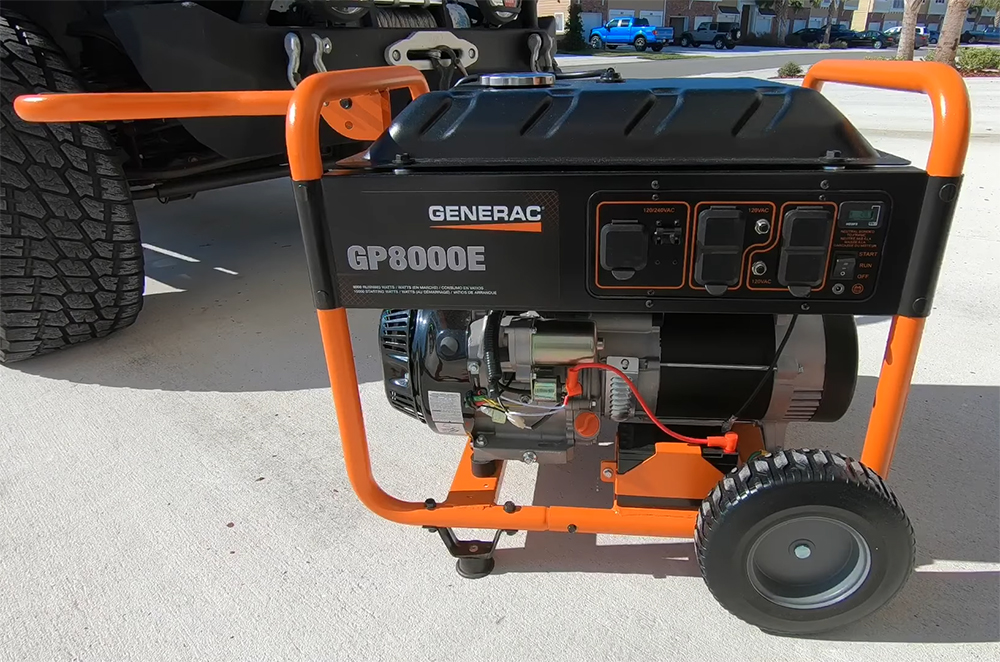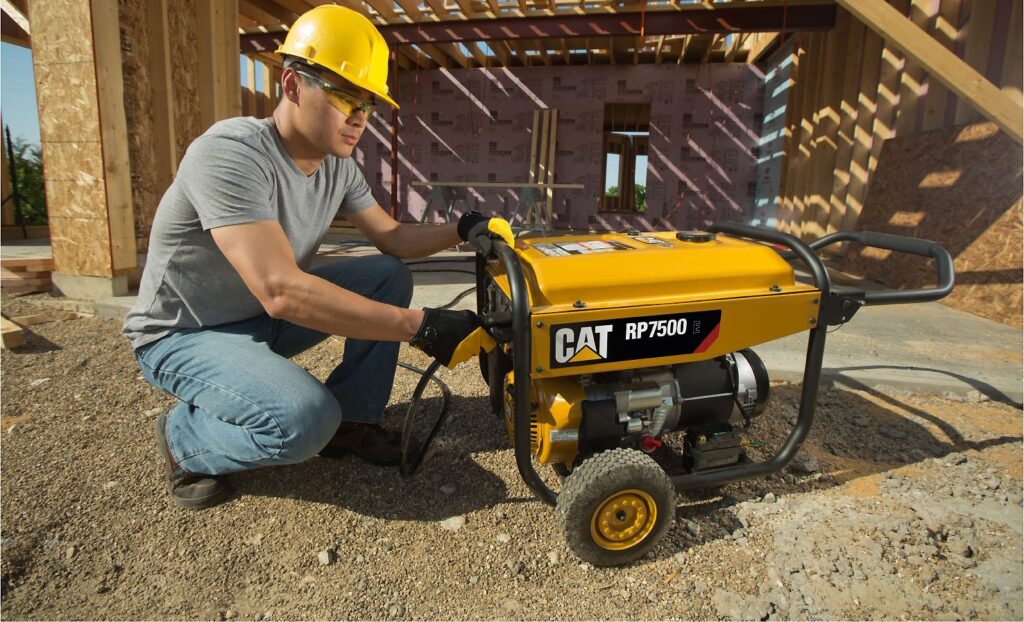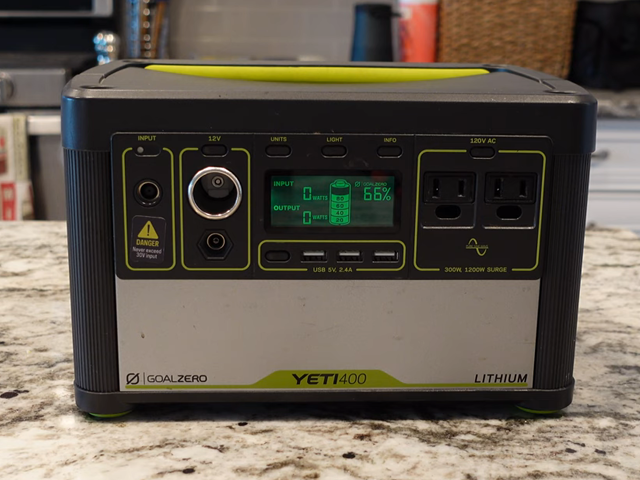Yamaha and Honda are two of the most respected names in the portable generator industry. Many of their models compete head-to-head on power, reliability, and cost. So, when it comes to choosing between Yamaha vs Honda generators, how do you decide which one is right for you?
There are some small, but critical differences to know about when choosing between Yamaha and Honda. Let’s take a look at these two brands and some of their popular generator models to see how they stack up.
Yamaha and Honda are both well-known engine-makers with reputations for reliability and durability. While there are a lot of manufacturers making portable generators these days, it’s hard to find anyone who will disagree that Yamaha and Honda are vying for position at the front of the pack.
Honda has been making portable generators since 1965, when it released a 300-watt portable diesel generator. Today, the product line has expanded to be dominated by gasoline-powered inverter generators that are impressively quiet for the amount of power they put out. However, beware that Honda generators have a reputation for being pricey – even if users unanimously declare that the price is well worth it.
Yamaha got its start producing generators in 1973, and like Honda has turned increasingly towards inverter models in the past two decades. Yamaha models are still pricey, but the company tends to focus slightly more on affordability than on minimizing noise compared to Honda.
Both Yamaha and Honda are known for the reliability of their engines – both companies are involved heavily in the motorsports industry, after all. Each company also offers a three-year warranty if you ever run into issues with your generator.
There are some general distinctions that we can draw between Honda vs Yamaha generators. But, the best way to explore the differences between these companies is to look at how their individual generators stack up. So, let’s take a head-to-head look at three different pairings of popular Yamaha and Honda generators.
| Yamaha EF2200iS | Honda EU2200i | |
| Type | Inverter | Inverter |
| Peak watts | 2200W | 2200W |
| Rated watts | 1800W | 1800W |
| Engine | OHV, air-cooled, single cylinder, 4-stroke | OHC, 4-stroke, single cylinder |
| Displacement | 79cc | 121cc |
| Fuel tank | 1.24 gal | 0.95 gal. |
| Run time | 10.5 hrs (1/4 load) | 8.1 hrs (1/4 load) |
| Outlets | (2) 120V Household; (1) 12V DC | (2) 120V Household; (1) 12V DC |
| Start type | Recoil | Recoil |
| Noise level | 57–65 dBA | 48–57 dBA |
| Dimensions | 21.9 x 11.8 x 18.5 in | 20.0 x 11.4 x 16.7 in |
| Weight | 55.2 lbs | 46.5 lbs |
| Warranty | 3-year limited | 3-year limited |
| VIEW ON AMAZON | VIEW ON AMAZON |
The Yamaha EF2200iS and Honda EU2200i are two of the top inverter generators in the 2,000-watt power class available today. Both generators offer 2,200 watts of surge power and 1,800 watts of continuous power, making them perfect for any moderate power application.
The differences between these two generators starts in the engine construction. While both use air-cooled, four-stroke engines to create power, the Yamaha engine is just 79cc while the Honda engine is 121cc. This doesn’t impact fuel efficiency or power much at all, but the larger size of the Honda engine does leave less room for the fuel tank.
That’s partly to blame for the fairly small fuel tank on the Honda generator, which is just 0.95 gallons compared to 1.21 gallons for the Yamaha generator. This makes a noticeable difference in runtime – the Yamaha EF2200iS can run for 10.5 hours at a 25% load, while the Honda EU2200i is limited to 8 hours.
Honda strikes back, though, by making the EU2200i one of the quietest portable generators on the market. At a 25% load, this generator makes just 48 dB of noise. The Yamaha model, at 57 dB, is nearly 10 times as loud. The 10x difference in noise volume is maintained even as you crank both generators to full power.
It’s important to note that Yamaha and Honda both provide a lot of the same outlets and ease of use features on these two generators. They each come with a 120-volt duplex and a 12-volt DC outlet, but not much else. Both generators use a recoil starter rather than an electric push-start.
The generators are significantly different in weight. The Honda model is nearly 9 pounds lighter, which can be a big difference when you’re carrying the generator by hand.
While the Yamaha model is about $50 cheaper than the Honda generator, the price difference probably isn’t enough to drive you one way or another. Ultimately, the choice between these two generators comes down to whether you want to minimize noise and weight (the Honda EU2200i) or maximize runtime (the Yamaha EF2200iS).
| Yamaha EF3000iSEB | Honda EU3000I Handi | |
| Type | Inverter | Inverter |
| Peak watts | 3000W (+ 500W boost) | 3000W |
| Rated watts | 2800W | 2600W |
| Engine | OHV, air-cooled, single cylinder, 4-stroke | OHV, 4-stroke, single cylinder |
| Displacement | 171cc | 163cc |
| Fuel tank | 3.4 gal | 1.6 gal. |
| Run time | 18.6 hrs (1/4 load) | 7.7 hrs (1/4 load) |
| Outlets | 12V DC, 20A and 30A 120V AC, 30A Twist Lock | 20A 125V Duplex, 30A 125V Locking Plug |
| Start type | Recoil | Recoil |
| Noise level | 53–60 dBA | 52–58 dBA |
| Dimensions | 26.8 x 17.5 x 21.9 in | 24.5 x 14.9 x 19.3 in |
| Weight | 154.3 lbs | 78 lbs |
| Warranty | 3-year limited | 3-year limited |
| VIEW ON AMAZON | VIEW ON AMAZON |
If you need a bit more power than the EF2200iS or EU2200i can provide, Yamaha and Honda both offer 3,000-watt inverter generators as well. Yamaha’s EF3000iSEB generator provides 3,000 watts of surge power and 2,800 watts of continuous power using a 171cc OHV, four-stroke engine. Honda’s EU3000i Handi generator matches the surge power at 3,000 watts, but only offers 2,600 watts of continuous power. In addition, the OHV, four-stroke engine is slightly smaller, at 163cc.
It’s also worth noting that Yamaha’s generator features Yamaha Boost Technology, which allows you to pull up to 3,500 watts for 10 seconds. The extra power eliminates the inverter function of the generator, so you won’t want to pull more than 3,000 watts when sensitive electronics are plugged in. But, if you need the occasional extra wattage, this is a huge advantage over the Honda design.
Yamaha also pulls ahead with a massive 3.4-gallon fuel tank, which allows you to run the generator for up to 18.6 hours at a 25% load. By comparison, the Honda EU3000i Handi is equipped with a much smaller 1.6-gallon fuel tank, which limits you to just 7.7 hours of use at an even lesser power output. That’s a huge difference, especially since you can only barely get a full day of continuous power out of the Honda model.
Importantly, Yamaha also caught up to Honda when it comes to noise reduction in this generator class. The Honda generator is still extremely quiet, producing 52 dB of noise at 25% output and 58 dB at full power. The Yamaha generator starts at 53 dB and ramps up to 60 dB, but you’re also getting more power at full load.
The main thing that the Honda generator has going for it is that it’s much more compact and lightweight for portability. The Honda generator weighs in at 78 pounds, whereas the Yamaha is a whopping 154 pounds. On top of that, Honda made their 3,000-watt generator with a fold-away tow handle, which is pretty handy for transport. The Yamaha generator is mounted on wheels, but the front wheels aren’t burly enough for off-road rolling.
These two generators are very similar in price (again, the Yamaha is about $50 cheaper) and feature the same set of outlets. Yamaha arguably created a more versatile 3,000-watt inverter generator with the EF3000iSEB, but the Honda EU3000i Handi is worth a closer look if portability and weight are important to you.
| Yamaha EF7200DE | Honda EU7000iS | |
| Type | Conventional | Inverter |
| Peak watts | 7200W | 7000W |
| Rated watts | 6000W | 5500W |
| Engine | MZ360 (OHV) | Honda GX390 EFI (OHV, air-cooled, 4-stroke) |
| Displacement | 358cc | 389cc |
| Fuel tank | 6.9 gal. | 5.1 gal. |
| Run time | 8 hrs (rated load) | 6.5 hrs (rated load) |
| Outlets | (4) 120V 20A GFCI; 120V 30A Twist Lock; 120/240V 30A Twist Lock | (2) 20A 125V GFCI Duplex, 30A 125V Locking Plug, 30A 125/250V Locking Plug |
| Start type | Electric, recoil | Electric, recoil |
| Noise level | 74.5 dB | 52–58 dB |
| Dimensions | 21.9 x 29 x 31.5 in | 33.4 x 27.6 x 28.4 in |
| Weight | 245.7 lbs | 261 lbs |
| Warranty | 3-year limited | 3-year limited |
| VIEW ON AMAZON | VIEW ON AMAZON |
For heavy power users, Yamaha offers the EF7200DE and Honda offers the EU7000iS. Importantly, Yamaha’s high-powered portable generator is a conventional generator while Honda’s is one of the most powerful inverter generators currently available. So, off the bat there’s very little comparison if the advantages of an inverter generator are important to you.
The two generators are very favorably matched on surge power, especially given that the Honda model is putting out inverted power. The Yamaha generator can produce up to 7,200 watts, while the Honda generator produces up to 7,000 watts. For standard use, the Yamaha model can hold up to 6,000 watts continuously, while the Honda model is limited to 5,500 watts.
Thanks to the differences between a conventional and inverter generator engine – a conventional engine isn’t nearly as fuel efficient – the difference in fuel tank size between these two models doesn’t produce a huge shift in runtime. The Yamaha generator comes with a 6.9-gallon fuel tank that allows you to run at 6,000 watts for up to 8 hours. Meanwhile, the Honda’s 5.1-gallon fuel tank offers a runtime of up to 6.5 hours at 5,500 watts. These runtimes are extremely long (they’re equivalent to more than 20 hours each at a 25% load), so you hardly have to worry about fuel consumption with either of these generators.
The generators are largely matched when it comes to the outlet panels. Both feature a simple LED hour meter so you can keep track of your power output and remaining fuel. Both also have an electric push-starter, along with a backup recoil starter you can use in case the onboard battery dies. Each generator also offers a 120-volt/240-volt or 125-volt/250-volt twist-lock outlet so you can power high-voltage appliances and tools. The main difference to note here is that the Yamaha generator has four basic 120-volt outlets you can use, while the Honda generator only offers two of them.
When it comes to noise, there’s simply no competition – Honda’s inverter engine is roughly 100 times quieter than Yamaha’s conventional generator engine. The difference is staggering. You can easily hold a conversation next to the Honda EU70000iS, whereas you’ll want to consider ear protection when working near the Yamaha EF7200DE. In fact, the Honda generator doesn’t produce any more noise than the EU3000i Handi, which offers half as much power.
Both of these generators are quite heavy, so the 15-pound difference between them probably won’t make much of a difference for you. Each is mounted on never-flat wheels that are capable of off-road travel, and the frames include fold-away handles so you can tow the generator easily.
Perhaps unsurprisingly, cost is the big differentiator between these two models. Honda’s powerful inverter generator costs nearly $4,500, compared to less than $2,000 for Yamaha’s conventional generator. It’s hard to argue that the Yamaha is “better” in terms of specs, but your budget will play an important role in deciding which of these generators is better for you.
Honda and Yamaha are two of the most well-respected brands in the world of portable generators. Each company is known for making top-of-the-line generator models that push the boundaries of high power, low noise, user-friendly design, and engine reliability. When choosing between a Yamaha vs Honda generator, which brand is better for you comes down to the specific models you’re comparing.
Honda and Yamahas’ 2,000-watt offerings are closely matched, and each model has different advantages and weaknesses. We like the Honda generator is reducing noise is important to you, or the Yamaha generator if continuous power all day is important to you. Yamaha is the better choice for most users in the 3,000-watt size class, but you sacrifice portability for power and runtime compared to the Honda model. In the 7,000-watt power range, Honda makes a far better generator – it’s an inverter that’s impressively quiet. However, the cost is so high that it’s not affordable for many people, and the Yamaha conventional generator has a lot to offer as well.





